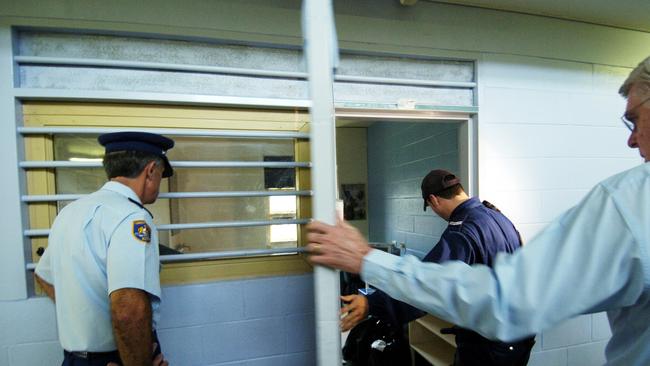NSW deaths in custody: Where and when the most inmates are dying in prison
A 40-year investigation has uncovered the deadliest year on record in NSW prisons as it is revealed NSW has more deaths in custody than Victoria and Queensland combined. SEE THE DEATHS IN CUSTODY INVESTIGATION HERE.
Blacktown
Don't miss out on the headlines from Blacktown. Followed categories will be added to My News.
- NSW’s most shocking prison deaths: investigation records 671 deaths in 40 years
- Dead inmate Alex Clements had allegedly tried to drown toddler
- Parklea Jail: Inmate found dead, police investigating
- Parklea prison, MTC: New Operators’ history of riots
A massive 704 inmates in correctional centres across the state have died behind bars over the past 40 years — but new research has uncovered the deadliest year on record and the two decades that claimed the most lives in our prison system.
NewsLocal is shining a spotlight on deaths in custody across the NSW prison system with 704 recorded through a 40-year inquiry by the Australian Institute of Criminology.
The nationwide study, which will be featured over a multi-part NewsLocal investigation, offers a detailed breakdown of the reasons for deaths in custody in different jurisdictions across the country; where inmates are dying and the horror years that have claimed the most lives in our prison system.

The major research study uncovered two decades resulted in record numbers of deaths in custody with the 1990s claiming 222 lives, while 207 inmates died behind bars between 2010 and 2019.
NewsLocal’s deaths in custody investigation can reveal 2018/19 was the deadliest year in recent history for the NSW prison system, with Corrective Services NSW recording 33 deaths in custody between July 1 2018 and June 30, 2019.
“Seventeen deaths were from apparent natural causes, 10 from apparent unnatural causes and six were unknown,” a Corrective Services NSW spokeswoman told NewsLocal.
“Of these deaths, two were in a private prison.”
The spokeswoman said Corrective Services records show 11 inmates died in Long Bay Hospital and six in the Metropolitan Remand and Reception Centre, Silverwater.
Two deaths were recorded in centres including the Mid North Coast, Goulburn, Geoffrey Pearce, Dawn De Loas and Junee, while Cooma Correctional Centre, Lithgow Correctional Centre, Cessnock Correctional Centre, Mannus Correctional Centre, Metropolitan Special Programs Centre and Lismore Court Cells all saw one death in custody.

The Institute of Criminology research data also revealed NSW had the same number of deaths in prison custody between 1979 and 2018 as Victoria and Queensland prisons saw combined.
A total of 314 deaths were recorded in Victorian prisons, while 342 deaths were recorded in Queensland.
Western Australia saw 49 deaths, South Australia recorded 153 and the Northern Territory resulted in 53 death during the same period. Tasmania recorded 49 deaths in custody, while the Capital Territory saw just 10 deaths in 40 years.

The Corrective Services NSW spokeswoman also revealed 12 people had died in custody in the 2019-20 financial year, with four inmates dying in Long Bay Hospital, two at Parklea and two at the Metropolitan Special Programs Centre. Cessnock, Silverwater Women’s, Glen Innes and the Metropolitan Remand and Reception Centre all saw one death each.
A Criminology Institute researcher said the death rates of indigenous prisoners have been consistently lower than the death rates of non-indigenous prisoners since 2003-2004.
“The death rate of indigenous prisoners in 2017-18 was lower than the death rate for non-indigenous prisoners (at) 0.14 and 0.18 per 100 respectively,” the researcher said.
“Between 2016–17 and 2017–18 there was an increase in the number of deaths occurring in
NSW and a decrease in Victoria, Western Australia, Queensland and the Australian Capital Territory.

“The number of deaths remained stable in South Australia, Tasmania and the Northern Territory.”
The median age of prisoners at time of death across the country was at 53 years for non-indigenous prisoners, however indigenous inmates died more than a decade earlier at 42 years of age.

